1983
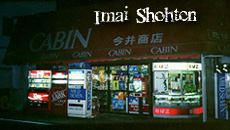 In 1983, Hisashi Imai was a student at the all boys Gunma Prefecture Fujioka Senior High School (Gunma Kenritsu Fujioka Koutou Gakkou) and decided that he wanted to form a band with his friend Araki. Buck-Tick have never divulged his full name but in what appears to be a self-published interview in 1984, his name is Masami Araki. On a gig flyer from 1985, it was listed as Mataemon Araki, the name of a samurai. Hisashi did not know how to play any musical instruments but decided he would play guitar and Araki would be on vocals. His reasoning was that the vocalist is the main focus of the band and thus has the most pressure so he would rather not have to deal with that. Araki had been a friend of Hisashi's since 5th grade. Hisashi's parents owned a tabako-ya (which means cigarette store but it's more like a convenience store) called Imai Shohten (Imai Shop) across from the train station, where a lot of the students from his high school would hang out at after school. The family's home was connected to the shop. Buck-Tick's future members knew each other from hanging out at this store. The members recall also hanging out in Hisashi's room, where "he always had strange European music playing in the background". Often Hisashi didn't even know the students that were hanging out in his room. It didn't matter, his mother would still serve them snacks. Some of the music Hisashi would play included Oingo Boingo, T-Rex, and Squeeze. He was also into punk and electronic music more than songs with vocals. Years later, this store would become the place that Buck-Tick fans hang out at when the band returned home to play shows. These days it seems more like a storage room with photos of the band and gifts from fans strewn about.
In 1983, Hisashi Imai was a student at the all boys Gunma Prefecture Fujioka Senior High School (Gunma Kenritsu Fujioka Koutou Gakkou) and decided that he wanted to form a band with his friend Araki. Buck-Tick have never divulged his full name but in what appears to be a self-published interview in 1984, his name is Masami Araki. On a gig flyer from 1985, it was listed as Mataemon Araki, the name of a samurai. Hisashi did not know how to play any musical instruments but decided he would play guitar and Araki would be on vocals. His reasoning was that the vocalist is the main focus of the band and thus has the most pressure so he would rather not have to deal with that. Araki had been a friend of Hisashi's since 5th grade. Hisashi's parents owned a tabako-ya (which means cigarette store but it's more like a convenience store) called Imai Shohten (Imai Shop) across from the train station, where a lot of the students from his high school would hang out at after school. The family's home was connected to the shop. Buck-Tick's future members knew each other from hanging out at this store. The members recall also hanging out in Hisashi's room, where "he always had strange European music playing in the background". Often Hisashi didn't even know the students that were hanging out in his room. It didn't matter, his mother would still serve them snacks. Some of the music Hisashi would play included Oingo Boingo, T-Rex, and Squeeze. He was also into punk and electronic music more than songs with vocals. Years later, this store would become the place that Buck-Tick fans hang out at when the band returned home to play shows. These days it seems more like a storage room with photos of the band and gifts from fans strewn about.
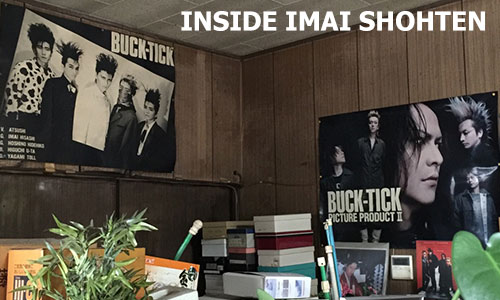
Yutaka Higuchi (all his friends call him U-ta) also wanted to be in a band. Hisashi and U-ta began to discuss Buck-Tick's beginnings. [Hisashi's mother recalls of U-ta as being "a good kid who would visit Hisashi very early in the morning". Since it is impossible to wake Hisashi up, she would send U-ta to do it. U-ta would arrive so early in the morning because of the schedule of the train he would take to go to school.] U-ta's older brother, Toll Yagami (they have the same parents but Toll uses a stage name), played the drums in a band called Spots (who later changed their name to simply S.P). U-ta would hang out with Spots and the bassist had shown U-ta a few things about the bass. Thus, U-ta decided he wanted to play bass. He bought a Tokai jazz bass for ¥40,000 because it had a thin neck and that made it easy to play. Another story goes that when they started talking about forming a band, Atsushi decided that he would play drums and U-ta wanted to play guitar but Atsushi told him that he will play bass.
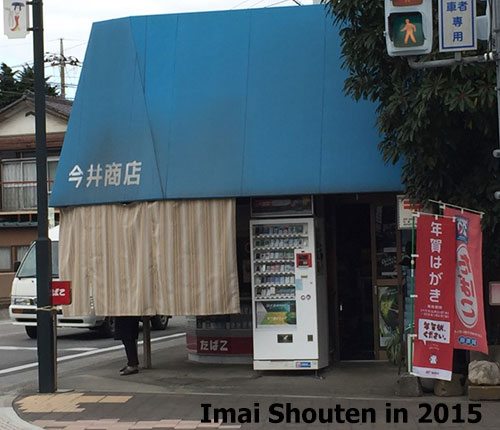
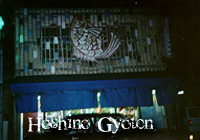 U-ta had a friend named Hidehiko Hoshino (known as Hide to his friends) who he met at the start of high school but they didn't become good friends until 1 year later. Hide's room was also a popular hang out spot with the high school kids since he lived so close to school and was pretty much living alone. In fact, it was out of laziness that Hide decided to go to the all boys high school. He chose to go there because it was the closest high school to his house. U-ta asked Hide if he would like to be in a band. The idea excited Hide because since his brother went to college all he did after school was go home above the fish store his parents owned called Ohyama Gyoten or to his grandfather's house in the back and read comics. He previously was intensely into soccer (football in other countries), but in high school he was no longer the best player so his love for the sport began to dwindle. Plus, after an illness caused him to miss several practices, he was told to quit. His parents were busy with the shop and his younger sister. Since his brother was off at school, he was pretty much by himself. He was into music before but grew much more interested in it once soccer was out of his life. As for his parents store, Hide's book Simply Life explains that when they took over the store they kept the name, which is why it's not called Hoshino. It is now closed but it was a small market which mainly sold fish, but they also sold vegetables, candy, ice cream, etc. When I visited in 2015, the decorative fish mosaic on the building was gone but the old sign was discarded across the street and has apparently been there for quite some time. (Did they upset the trash collectors?)
U-ta had a friend named Hidehiko Hoshino (known as Hide to his friends) who he met at the start of high school but they didn't become good friends until 1 year later. Hide's room was also a popular hang out spot with the high school kids since he lived so close to school and was pretty much living alone. In fact, it was out of laziness that Hide decided to go to the all boys high school. He chose to go there because it was the closest high school to his house. U-ta asked Hide if he would like to be in a band. The idea excited Hide because since his brother went to college all he did after school was go home above the fish store his parents owned called Ohyama Gyoten or to his grandfather's house in the back and read comics. He previously was intensely into soccer (football in other countries), but in high school he was no longer the best player so his love for the sport began to dwindle. Plus, after an illness caused him to miss several practices, he was told to quit. His parents were busy with the shop and his younger sister. Since his brother was off at school, he was pretty much by himself. He was into music before but grew much more interested in it once soccer was out of his life. As for his parents store, Hide's book Simply Life explains that when they took over the store they kept the name, which is why it's not called Hoshino. It is now closed but it was a small market which mainly sold fish, but they also sold vegetables, candy, ice cream, etc. When I visited in 2015, the decorative fish mosaic on the building was gone but the old sign was discarded across the street and has apparently been there for quite some time. (Did they upset the trash collectors?)
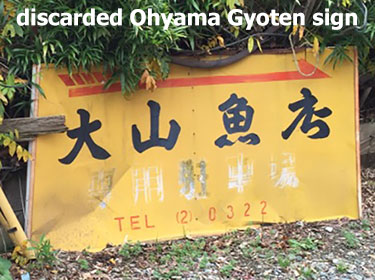
In U-ta's opinion, since Hide was tall and good looking, Hide should become the vocalist. However, Hide really had his heart set on playing guitar. When U-ta brought Hide to meet Hisashi and told him his plans of making Hide the vocalist, Hisashi said that the place was already filled by his friend Araki. Hisashi was in fact a little annoyed that U-ta brought Hide over because he didn't want someone in the grade below him to join the band. U-ta was insistent that Hide join the band and they eventually agreed that the band could have two guitarists. Hide bought a Greco stratocaster guitar. It was probably in the summer when Hisashi bought a used Fresher stratocaster guitar for ¥29,800. He bought a cheap amp from a friend and also acquired a distortion pedal. He didn't like the way playing right-handed guitar felt so he played it left-handed. He recalls that it was hard to find guitars for left-handers. He practiced to the point he fell asleep holding the guitar.
In 1983 or 1984, Hisashi, Hide, and U-ta hand paint their instruments. This seems to be an imitation or homage to Boøwy. Customizing their instruments for a unique look will last the longest with Hisashi, who continues to this day to have his endorsed guitar company create interesting body shapes for him. Incidentally, Boøwy was a band popular in Gunma at the time because they were from Gunma. The singer even attended the same high school as Buck-Tick and U-ta was friends with one of the members.
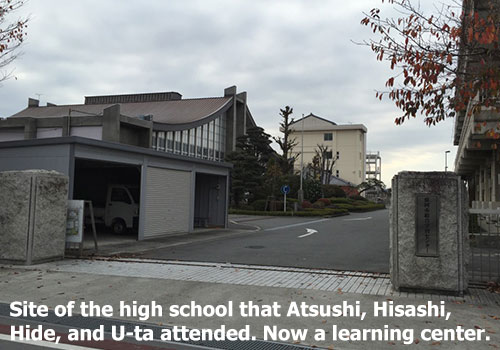
Enter Atsushi Sakurai, a boy who had been in the same class with Hisashi for a whole year and never spoke a word to him. Hisashi thinks they spoke perhaps 2 or 3 words during their second year in school and it wasn't until their third and final year in school that they started to talk to each other when they were forming the band. Years later during an interview, Atsushi thinks that his first interaction with Hisashi was asking to borrow ¥50. As to why they never talked, Atsushi claims that he didn't really talk to anyone at school because all of his friends were from outside the school. Atsushi was a rebelious kid with few to no friends who would get in trouble. He liked the 1950s look and then turned towards what Japanese often refer to as "yankee". [His hair was in a "rezento" style, which means "regent" but it's the Japanese term for pompadour however it's more like a permed version of The Misfits look.] Atsushi said he would play the drums and bought a beat up used set for ¥30,000. All of them seemed to dislike school in general and not have an interest for studying, were generally shy when it came to girls, and perhaps only had a few close friends. U-ta was the exception. He was a talkative kid who could be friends with anyone and knew a lot of people. A band seemed like a fun thing for these bored boys to do. Now all they needed to do was learn how to play!
Once everyone had acquired their instruments, they furiously learned on their own at home but would practice together as well. Atsushi's father hated the drums so he ended up practicing at U-ta and Toll's house and Toll gave him some lessons. Not only did the S.P bassist teach U-ta about bass, the guitarist in S.P showed Hisashi and Hide how to play a few chords. (Of note, the S.P guitarist attended the same high school and was in the grade above Hisashi and Atsushi.) This is why Toll likes to joke that Hinan Go-Go is the little brother of S.P. When everyone had to practice together, they would gather at U-ta and Toll's house about 2 or 3 times per week. They timed their rehearsals for when the parents were not home, even though the home was quite large.
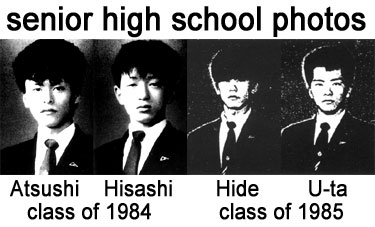
Side note: It used to be that one could get a taxi cab in Fujioka and ask for the "Buck-Tick course" to have a tour of where the high school was the the stores of the members' parents. Some taxi cab drivers may still do this. [I was still able to do this as recently as 2015. Fujioka is a small town so sometimes it feels like everyone is connected in one way or another. As long as you can communicate, you should be able to do a taxi tour of the sites. The most difficult part of this is finding a taxi! I wish I was kidding on that one. Also remember that the train connecting Fujioka to Takasaki is still infrequent, so infrequent that I lost patience and took a taxi.] It is standard in Japan for high school yearbooks to be on display in the school library, free for the public to peruse. I think Buck-Tick became too famous or the fans too bothersome and eventually the yearbooks were pulled from the library. Regardless, their former high school closed at the end of 2006 and I don't know what happened to the yearbooks that used to be on display. Their high school building first opened in 1897 and became a high school in 1948. The buildings still exist but now they are used for something else. The gate were many fans have taken pictures are still there but the sign has obviously changed.
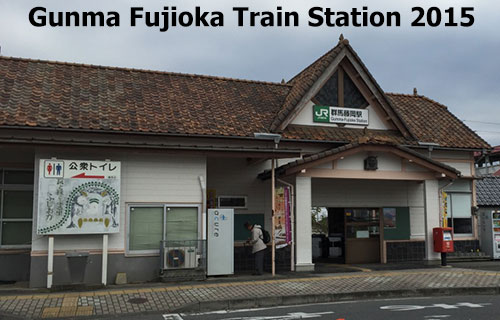
A little bit on public schools in Japan for context and how it's possible the members were in the same grade but never talked to each other. Pre-school exists. Elementary school (shougakkou) is comprised of kindergarten and grades 1-6. Junior high or middle school (chuugakkou) is 3 years, each being called year 1, 2, or 3 (grades 7-9 but Japanese don't refer it this way). School education is compulsory through middle school (9th grade) and one will learn all the necessary kanji for literacy in that period but employment opportunities will be limited to none. High school (koukou) is 3 years, each being called year 1, 2, or 3 (grades 10-12 but again, Japanese do not refer it this way). Enrollment at elementary and middle school is based on geographic location. High school entrance is by exam. Students study furiously to take the exam to place into their desired high school. It has been known that students who fail the exam for their desired school will wait and study again to get in to that school.
The Japanese school year begins in April and ends in March. Enrollment in kindergarten begins at age 5. If you are born in April or later, you are held back (all but U-ta and Atsushi). This is so that everyone is the same age. Everyone graduates at 18. School is held Monday-Saturday. Saturday is a half day of morning only. In the early 1990s, schools started to lessen Saturday attendance until Saturday became a no school day for most of the country in 2002. More recently, schools are holding classes on Saturdays again. In every grade there is a uniform but elementary schools, especially those in rural areas, may be much more relaxed on the uniform rules. In general all the uniforms looks similar, there may be some variations. There are strict rules on personal grooming, basically to be in the body you were born with so no hair dye, piercings, etc. There is also the standard backpack but it is not required. High school students tend to carry a soft briefcase. School books are purchased. Schools operate on a semester system. School lunches are served but you may bring your own. The students clean the classrooms and school grounds and these duties are rotated. Tuition is basically free through middle school but parents must often pay PTA fees. Participation in after school clubs are mandatory. (For example, for every year Hide did soccer. Hisashi was forced into rugby for one year. The clubs are not all sports based.)
The entire school grade is divided into several homerooms. These are numbered. For example, the fifth group of second grade is called "2nen no 5kumi" or "2 no 5" for short. Students will stay in the homeroom for most classes taught by the homeroom teacher but there may be specialty subjects for which a different teacher will teach in the homeroom or in a special classroom (such as science or culinary arts). This is especially true in the upper levels of education. You are always with your classmates and that is why it's common to know faces in your grades but not know people outside your homeroom until the next grade when everyone is redistributed into different homerooms. I think this attributes to why Japanese classmates are so close and may be friends for life or at least high school reunions for life. There are a variety of subjects taught. (For example, I learned how to chop vegetables and sew in elementary school.) Usually there is a smart/competitive high school in the area, an average or normal high school, and then there may be the school for delinquents. There is a big field trip during the last year of high school. These senior trips are usually quite memorable and another life bonding moment. This used to be a domestic trip but once Japan grew economically, some schools have been making this an international trip. Besides public school, there are private schools and it's ingrained in Japanese culture to attend tutoring schools as well. I hope this helps to paint the picture of why Buck-Tick members would have (not) talked to each other in school, of how they may have been bored, and why forming a band seemed like something fun to do in a small town when school bores you and you otherwise have no direction.